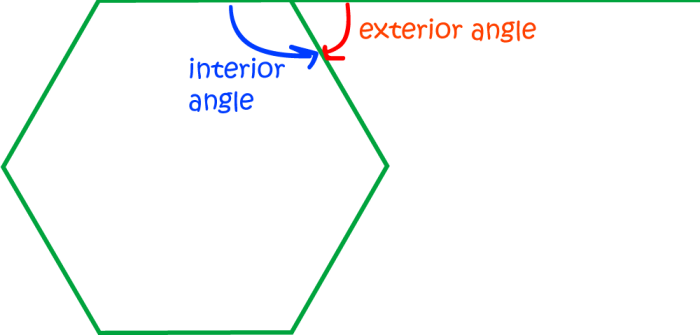Exploring the World of Co Interior: Unveiling the Geometry Behind the Angles

Embark on a journey through the realm of co interior angles, where geometric intricacies unfold to reveal a fascinating landscape of interconnected angles and polygons. Delve into the essence of co interior angles as we unravel their significance and applications in various real-world scenarios.
Discover the defining characteristics and relationships that define co interior angles, shaping our understanding of geometry and design.
Definition of Co Interior
When it comes to geometry, the term "co interior" refers to a pair of angles that share a common arm and vertex, with their non-common arms lying on the same side of the common arm. Co interior angles are often found in polygons and can help us understand the relationships between angles within these shapes.
Examples of Co Interior Angles and their Characteristics
- Example 1: In a triangle, if two angles are co interior, their sum is always equal to 180 degrees. This is known as the linear pair property of co interior angles.
- Example 2: In a quadrilateral, if two pairs of opposite angles are co interior, each pair adds up to 180 degrees.
Relationship of Co Interior Angles within a Polygon
Within a polygon, co interior angles can provide valuable insights into the interior angles of the shape. By identifying and understanding co interior angles, we can determine the measures of various angles within the polygon and solve geometric problems efficiently.
Properties of Co Interior Angles
Co interior angles are pairs of angles formed when two lines are intersected by a transversal, and the angles are located on the same side of the transversal. The properties of co interior angles include:
Relationship with Other Types of Angles
Co interior angles are supplementary, meaning that the sum of the two angles is always 180 degrees. This is in contrast to corresponding angles, which are congruent, and alternate interior angles, which are also congruent.
- When two lines are intersected by a transversal, the sum of the co interior angles on the same side of the transversal is always 180 degrees.
- Co interior angles can be found in various geometric shapes and figures, including parallel lines, triangles, and polygons.
- The concept of co interior angles is crucial in geometry, especially when dealing with proofs and solving for unknown angles in geometric problems.
Illustration of Co Interior Angles
A visual representation of co interior angles can be seen in the following diagram:[Description of a diagram showing two parallel lines intersected by a transversal, with co interior angles labeled and highlighted.]
Applications of Co Interior Angles

Co interior angles play a crucial role in various real-world applications, especially in fields like architecture, design, and problem-solving scenarios. Understanding co interior angles can lead to more efficient and accurate solutions in different contexts.
Architecture and Design
Co interior angles are commonly used in architecture and design to create visually appealing and structurally sound buildings. Architects and designers rely on knowledge of these angles to ensure proper placement and alignment of components such as beams, walls, and windows.
By calculating co interior angles, professionals can achieve balance and symmetry in their designs, resulting in aesthetically pleasing structures.
Problem-Solving Situations
Understanding co interior angles is essential in problem-solving situations, especially in geometry and trigonometry. By knowing the properties of co interior angles, individuals can easily determine unknown angles or lengths in geometric figures. This knowledge is valuable in fields like engineering, construction, and surveying, where precise measurements and calculations are required for accurate results.
Final Review

In conclusion, the exploration of co interior angles illuminates a world where precision meets creativity, offering a fresh perspective on the role of angles in shaping our environment. By grasping the concept of co interior angles, we unlock a key to unraveling the mysteries of geometry and design.
User Queries
What do co interior angles represent in geometry?
Co interior angles are angles that share the same vertex and are on the same side of the transversal line.
How are co interior angles different from other types of angles?
Co interior angles add up to 180 degrees, unlike other types of angles which may have different sum totals.
Where can knowledge of co interior angles be applied in real life?
Understanding co interior angles is crucial in architectural design, where precise angles play a vital role in creating structurally sound buildings.

